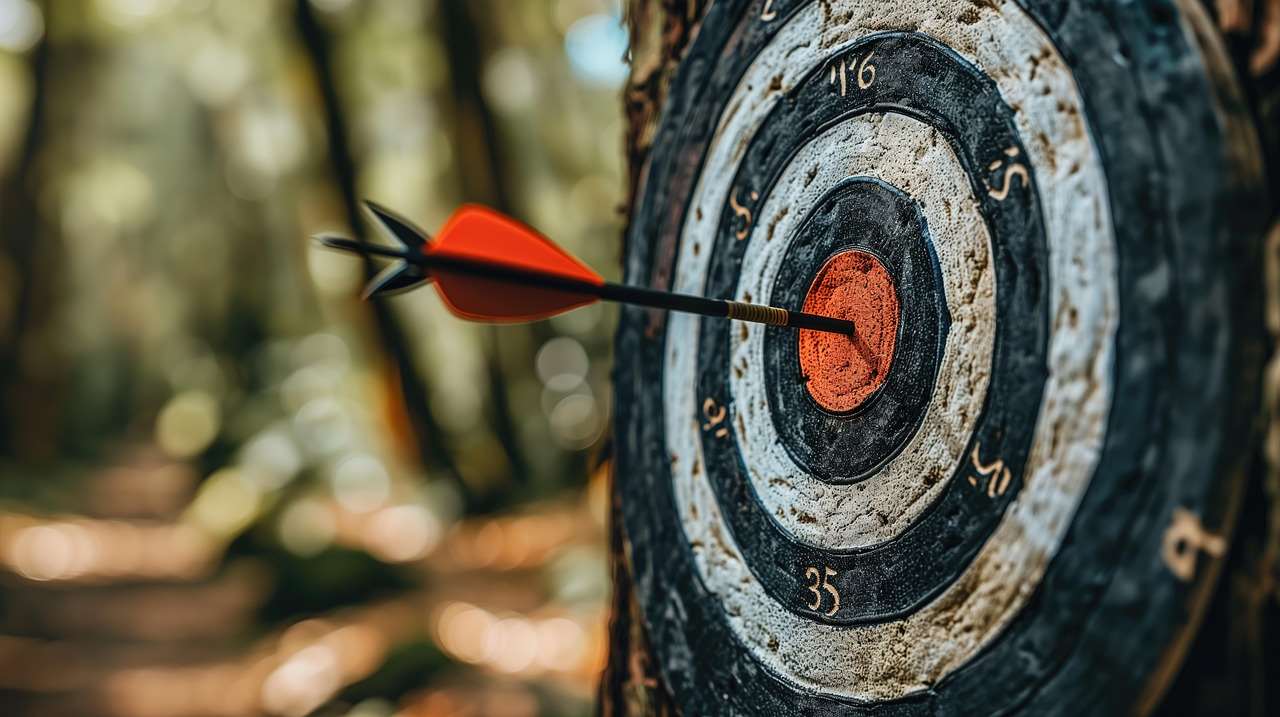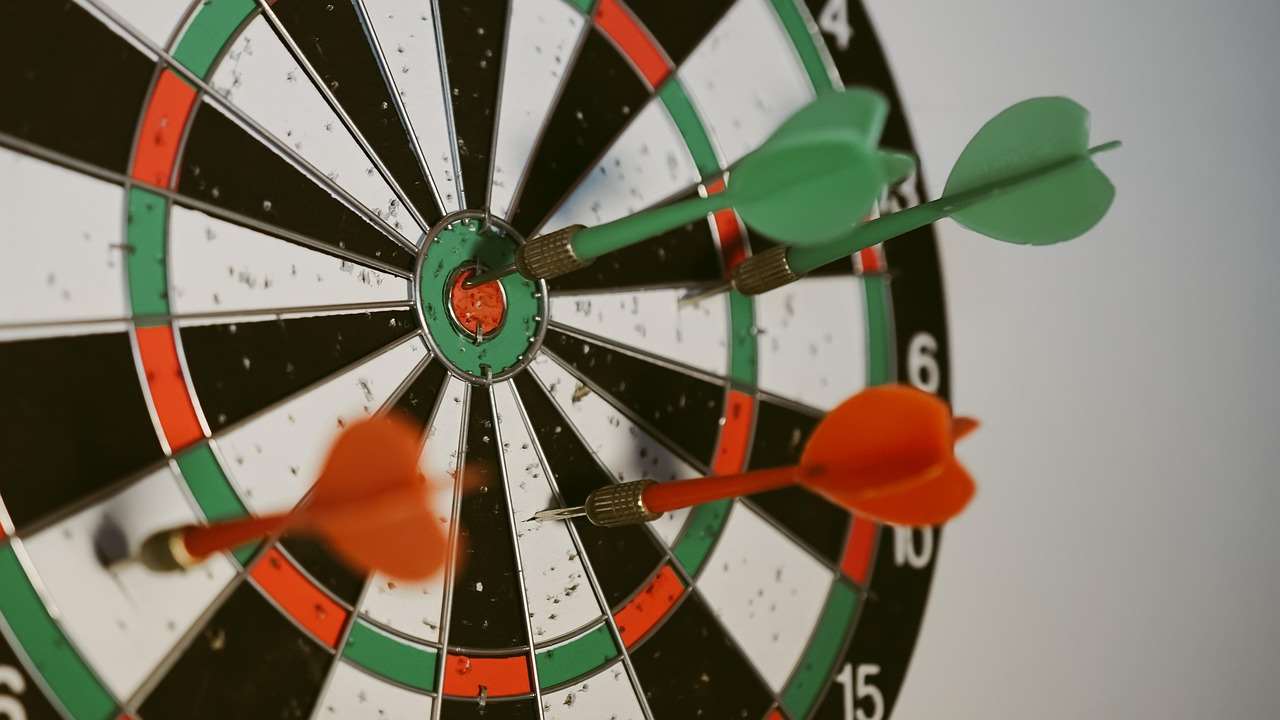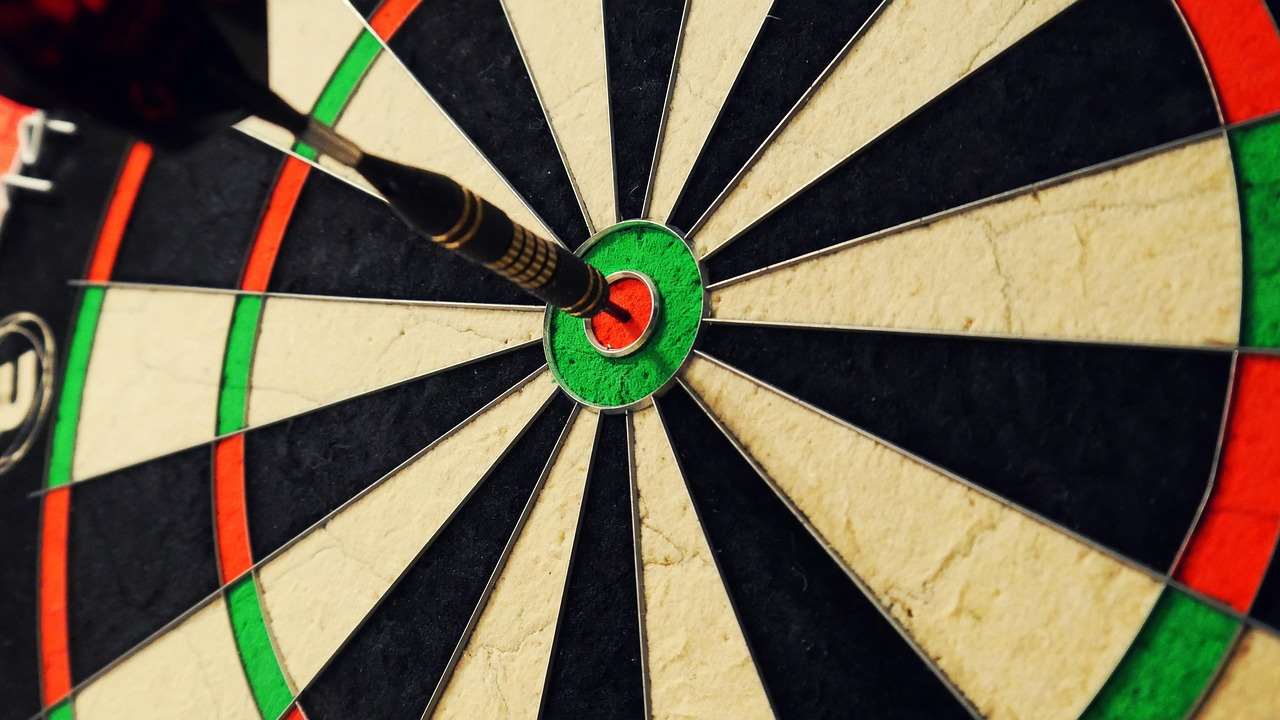Choosing between a blade vs round wire dartboard significantly impacts your scoring potential; blade wire boards, with their thinner profiles, dramatically reduce bounce-outs compared to traditional round wire boards, offering a superior playing experience. This article explores the detailed differences between these dartboard types, helping you select the best option for your skill level and playing style.
⚠️ Still Using Pen & Paper (or a Chalkboard)?! ⚠️
Step into the future! The Dart Counter App handles all the scoring, suggests checkouts, and tracks your stats automatically. It's easier than you think!
Try the Smart Dart Counter App FREE!Ready for an upgrade? Click above!
Understanding the Basics: Round Wire Dartboards
The classic round wire dartboard has been the standard for decades. Its construction involves embedding rounded wires into the dartboard’s sisal fibers. These wires create the segments and define the scoring zones.
Pros of Round Wire Dartboards:
- Affordability: Round wire boards are generally more budget-friendly than their blade wire counterparts.
- Availability: They are widely available in most sporting goods stores.
- Traditional Look: Many players appreciate the classic aesthetic of a round wire dartboard.
Cons of Round Wire Dartboards:
- Higher Bounce-Out Rate: The rounded wires deflect darts more frequently, leading to frustrating bounce-outs. This is because the dart has a larger surface area to hit, increasing the chances of glancing off.
- Wider Wires: The thicker wires reduce the scoring area, potentially affecting your accuracy.
- Durability Issues: Over time, the wires can loosen or become embedded further into the board, making it less consistent.

The Modern Alternative: Blade Wire Dartboards
Blade wire dartboards represent a significant advancement in dartboard technology. Instead of embedding rounded wires, they use thin, knife-edged blades to separate the scoring segments. This design minimizes the surface area of the wire, drastically reducing bounce-outs.
Pros of Blade Wire Dartboards:
- Reduced Bounce-Outs: The primary advantage of blade wire is the significantly lower bounce-out rate, leading to more accurate scoring and a more enjoyable playing experience.
- Larger Scoring Area: The thinner wires increase the scoring area within each segment, giving you a greater margin for error.
- Enhanced Durability: Many blade wire boards feature advanced construction techniques and high-quality materials, resulting in improved durability.
Cons of Blade Wire Dartboards:
- Higher Cost: Blade wire boards are typically more expensive than round wire boards.
- Potential for Wire Damage: While more durable overall, the thin blades can be susceptible to damage if hit repeatedly with excessive force.
Detailed Comparison: Blade vs Round Wire Dartboard
When comparing a Blade vs Round Wire Dartboard, several factors come into play. Let’s break down the key differences:

Bounce-Out Rate:
This is arguably the most significant difference. Blade wire dartboards consistently outperform round wire boards in terms of bounce-outs. The thin blades allow darts to slide past the wire and into the sisal more easily, minimizing deflections.
Scoring Area:
The thinner profile of blade wires increases the effective scoring area of each segment. This can be especially beneficial for players who are still developing their accuracy.
Durability:
While round wire boards are simpler in construction, high-quality blade wire boards often utilize denser sisal and advanced wire fastening techniques, leading to superior durability. Properly maintained, a good blade wire board can last for years.
Cost:
Round wire boards are generally more affordable, making them a good option for beginners or casual players on a budget. However, investing in a blade wire dartboard can be worthwhile for serious players looking to improve their game.
Aesthetics:
This is subjective, but many players find the cleaner, more modern look of blade wire dartboards to be more appealing. However, the traditional look of a round wire board has its own charm. Consider exploring Choose Best Dart Equipment for more options.
Factors to Consider When Choosing a Dartboard
Beyond the Blade vs Round Wire Dartboard debate, several other factors should influence your decision:
- Sisal Quality: Look for dartboards made with high-density sisal for maximum durability and self-healing properties.
- Wire Fastening: Ensure the wires are securely fastened to the board to prevent them from loosening over time.
- Construction Quality: A well-constructed dartboard will provide a more consistent and enjoyable playing experience.
- Your Skill Level: Beginners may find a round wire board sufficient, while more experienced players will likely benefit from the reduced bounce-outs of a blade wire board.
- Your Budget: Set a budget and explore options within your price range.

Impact of Dartboard Lighting on Gameplay
Regardless of whether you choose a Blade vs Round Wire Dartboard, proper lighting is crucial for optimal gameplay. Shadows can obscure the scoring segments, making it difficult to aim accurately. Consider investing in a dedicated dartboard lighting system to illuminate the board evenly. Check out Optimal Dartboard Lighting Solutions Guide for more information.
Types of Dartboard Lighting:
- Overhead Lights: These provide general illumination but can create shadows.
- Cabinet Lighting: Integrated lighting systems within dartboard cabinets offer a more focused and even light distribution.
- Ring Lights: These encircle the dartboard, providing shadow-free illumination.
Maintenance Tips for Your Dartboard
Proper maintenance can extend the lifespan of your blade or round wire dartboard and ensure consistent performance:
- Rotate the Board Regularly: This helps to distribute wear evenly and prevent certain segments from becoming overly worn.
- Remove Darts Carefully: Avoid twisting or yanking darts out of the board, as this can damage the sisal fibers.
- Moisturize the Sisal: In dry climates, occasionally misting the board with water can help to prevent it from drying out and cracking.
- Clean the Wires: Use a soft cloth to remove any dirt or debris from the wires.

Choosing the Right Darts for Your Dartboard
The type of darts you use can also impact your scoring and enjoyment of the game. Consider the following factors when choosing darts:
- Weight: Experiment with different weights to find what feels most comfortable and provides the best accuracy.
- Grip: Choose a grip that suits your throwing style and provides adequate control.
- Material: Darts are typically made from brass or tungsten. Tungsten darts are denser and more durable.
Conclusion: Making the Right Choice
Ultimately, the best dartboard for you depends on your individual needs and preferences. While blade wire dartboards offer significant advantages in terms of reduced bounce-outs and increased scoring area, round wire boards remain a viable option for beginners or those on a budget. Carefully consider the factors discussed in this article to make an informed decision and enhance your dart-playing experience. Whichever option you choose, remember to practice regularly and have fun! Ready to upgrade your game? Explore available dartboards and accessories and find the perfect fit to elevate your game to the next level! Check LED Dartboard Lights Benefits.

Hi, I’m Dieter, and I created Dartcounter (Dartcounterapp.com). My motivation wasn’t being a darts expert – quite the opposite! When I first started playing, I loved the game but found keeping accurate scores and tracking stats difficult and distracting.
I figured I couldn’t be the only one struggling with this. So, I decided to build a solution: an easy-to-use application that everyone, no matter their experience level, could use to manage scoring effortlessly.
My goal for Dartcounter was simple: let the app handle the numbers – the scoring, the averages, the stats, even checkout suggestions – so players could focus purely on their throw and enjoying the game. It began as a way to solve my own beginner’s problem, and I’m thrilled it has grown into a helpful tool for the wider darts community.